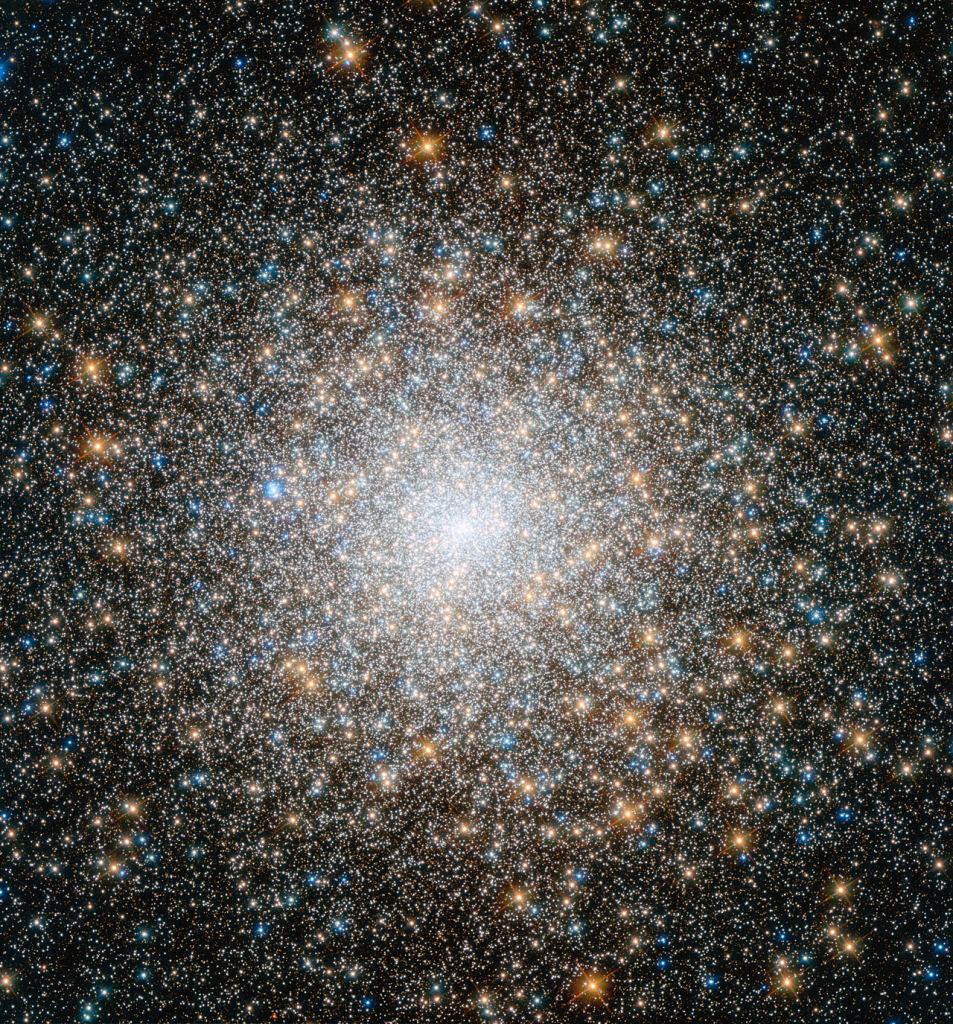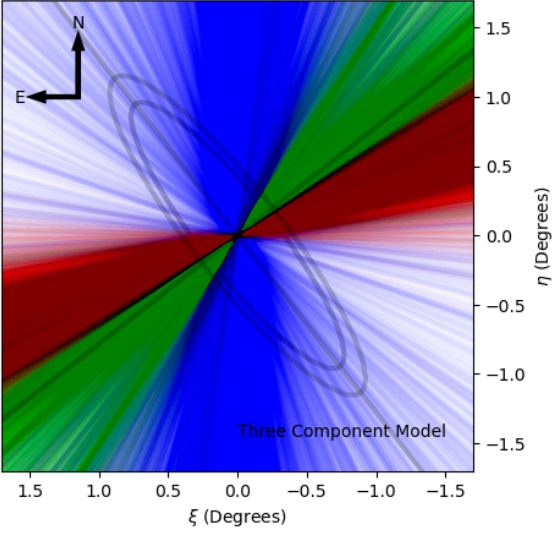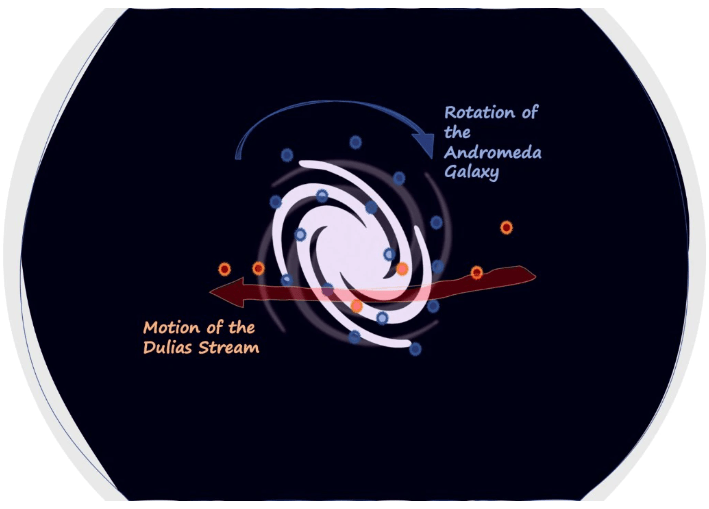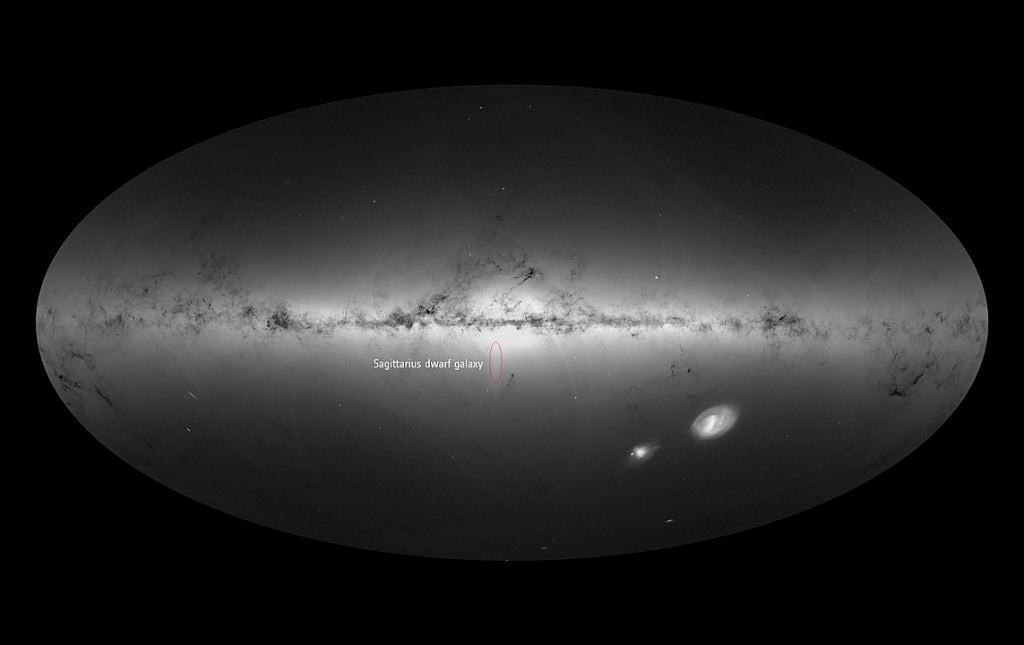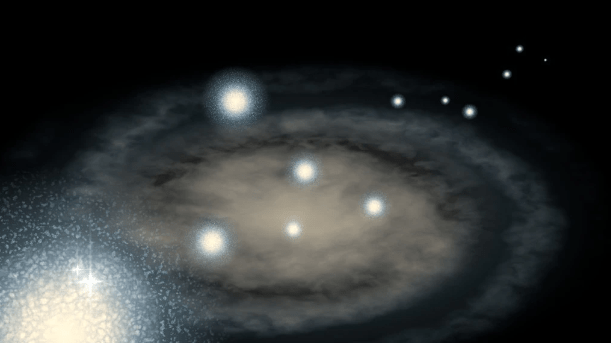There's a growing body of evidence that galaxies grow large by merging with other galaxies. Telescopes like the Hubble have captured dozens of interacting galaxies, including well-known ones like Arp 248. The Andromeda galaxy is the nearest large galaxy to the Milky Way, and a new study shows that our neighbour has consumed other galaxies in two distinct epochs.
"A few years ago, we discovered that in the far outskirts of Andromeda, there was a sign in the objects orbiting it that the galaxy hadn't been grazing, but it had eaten large quantities in two distinct epochs," said Professor Geraint Lewis from the University of Sydney.
Lewis is the lead author of a new paper titled " Chemo-dynamical substructure in the M31 inner halo globular clusters: Further evidence for a recent accretion event. " The Monthly Notices of the Royal Astronomical Society will publish the paper, and it's currently available at the pre-press site arxiv.org.
"We've come to realize over the last few decades that galaxies grow by eating smaller systems – so little galaxies fall in, they get eaten – it's galactic cannibalism."Professor Geraint Lewis, University of Sydney
"What this new result does is provide a clearer picture of how our local universe has come together – it is telling us that at least in one of the large galaxies, there has been this sporadic feeding of small galaxies," Lewis said in a press release.
Globular clusters are at the center of this research. They're older associations of stars that have lower metallicity. There are at least 150 in the Milky Way, likely more. They play a role in galactic evolution, but the role isn't clearly understood. Globulars, as they're known, are more prevalent in a galaxy's halo, while their counterparts, open clusters, are found in the galactic disks.
The researchers behind this work identified a population of globulars in Andromeda's inner halo that all have the same metallicity. Metallicity refers to the elemental makeup of stars, with elements heavier than hydrogen and helium referred to as metals in astronomy. The globulars have lower metallicity than most stars in the same region, meaning they came from elsewhere, not from Andromeda itself. It also means they're older since there were fewer heavy elements in the early Universe than there are now. Lewis named the collection of globulars the Dulai Structure, which means black stream in Welsh.
The Dulais Structure is likely a group of between 10 and 20 globulars misaligned with Andromeda's rotation. But they're not the only misaligned group of globulars. The Dulais Structure is evidence of Andromeda feeding on a group of globulars sometime in the last 5 billion years. The other group is a sub-population of globulars that's evidence of a second feeding event between 8 to 10 billion years ago.
According to Lewis and his co-authors, the globular clusters have lower metallicity and are also kinematically distinct from other clusters in the same region. The Andromeda galaxy rotates one way, and the Dulais Structure moves differently.
To Lewis and his co-authors, the Dulais Structure looks like the leftovers from a messy meal. It's a dark stream containing vibrant star clusters. It's further evidence that massive galaxies merge to produce gigantic displays throughout the Universe and that larger galaxies consume smaller globulars in a type of galactic cannibalism.
"That then leads to the next question of, well, what was actually consumed? Because it doesn't look like it was just one thing, it looks like it's been a collection of things that are all slowly torn apart," said Professor Lewis. "We've come to realize over the last few decades that galaxies grow by eating smaller systems – so little galaxies fall in, they get eaten – it's galactic cannibalism."
When these feeding events occurred, matter in the Universe was more tightly concentrated. Ten billion years ago, there may have been more of these events throughout the Universe. That's one of the reasons astronomers desire more and more powerful telescopes like the James Webb. They can see the light from ancient galaxies and look further back in time.
"We know that the Universe was featureless at its birth in the Big Bang, and today it's full of galaxies. Were those galaxies born fully formed, or have they grown?" Professor Lewis said.
Astronomers would like to know the history of our own Milky Way galaxy. We all would. That's difficult to do through observations because we're embedded in it. But Andromeda presents an opportunity to study galaxy evolution from an external perspective, and researchers like Lewis and his colleagues are taking full advantage. As a spiral galaxy similar to the Milky Way, some of what astronomers learn about galaxy mergers from Andromeda can apply to our galaxy, too.
But astronomers have more work to do before they can draw conclusions about the Milky Way. Or about mergers and consumptions in general. A more detailed timeline of galactic evolution throughout the Universe is the goal.
"What we want to know is, has the Milky Way done the same, or is it different? Both of those have interesting consequences for the overall picture of how galaxies form," Professor Lewis said. "We want to, at some level, come up with a more accurate clock to tell us when these events occurred because that's one thing we need to include in our models of how galaxies evolve."
As it stands, Lewis and the other researchers only have a two-dimensional historical view of the Dulais Structure. The dimensions are speed and chemistry. Finding the distances of all these objects will provide a 3rd dimension, which will fill out the history of the globulars and how Andromeda consumed them. Lewis isn't absolutely certain we can call them globulars at this point, and he won't be until there's more data. Hence the name "Dulais Structure."
"That will then allow us to work out orbits, where things are going, and then we can start to run the clock backwards and see if we can get this coherent picture of when things fell in," he said.
"We couldn't name it as an object like a galaxy because we actually do not know if the signature we see is from one big object disrupting or seven smaller objects disrupting. That's why we sort of refer to it as a structure rather than it being a particular galaxy."
There's obviously something going on with the Dulais Structure and the Andromeda galaxy. But true to his scientific training, Lewis is cautious about firm conclusions at this stage.
"It's opened a new door in terms of our understanding," Lewis said in a press release. "But exactly what it's telling us, I think we still have to work that one out."
The authors state their case clearly in their paper. "Intriguingly, the orbital axis of this Dulais Structure is closely aligned with that of the younger accretion event recently identified using a sub-population of globular clusters in the outer halo of Andromeda, and this is strongly suggestive of a causal relationship between the two," the authors summarize in their paper.
"If this connection is confirmed, a natural explanation for the kinematics of the globular clusters in the Dulais Structure is that they trace the accretion of a substantial progenitor (about 1011solar masses) into the halo of Andromeda during the last few billion years, which may have occurred as part of a larger group infall."
 Universe Today
Universe Today

